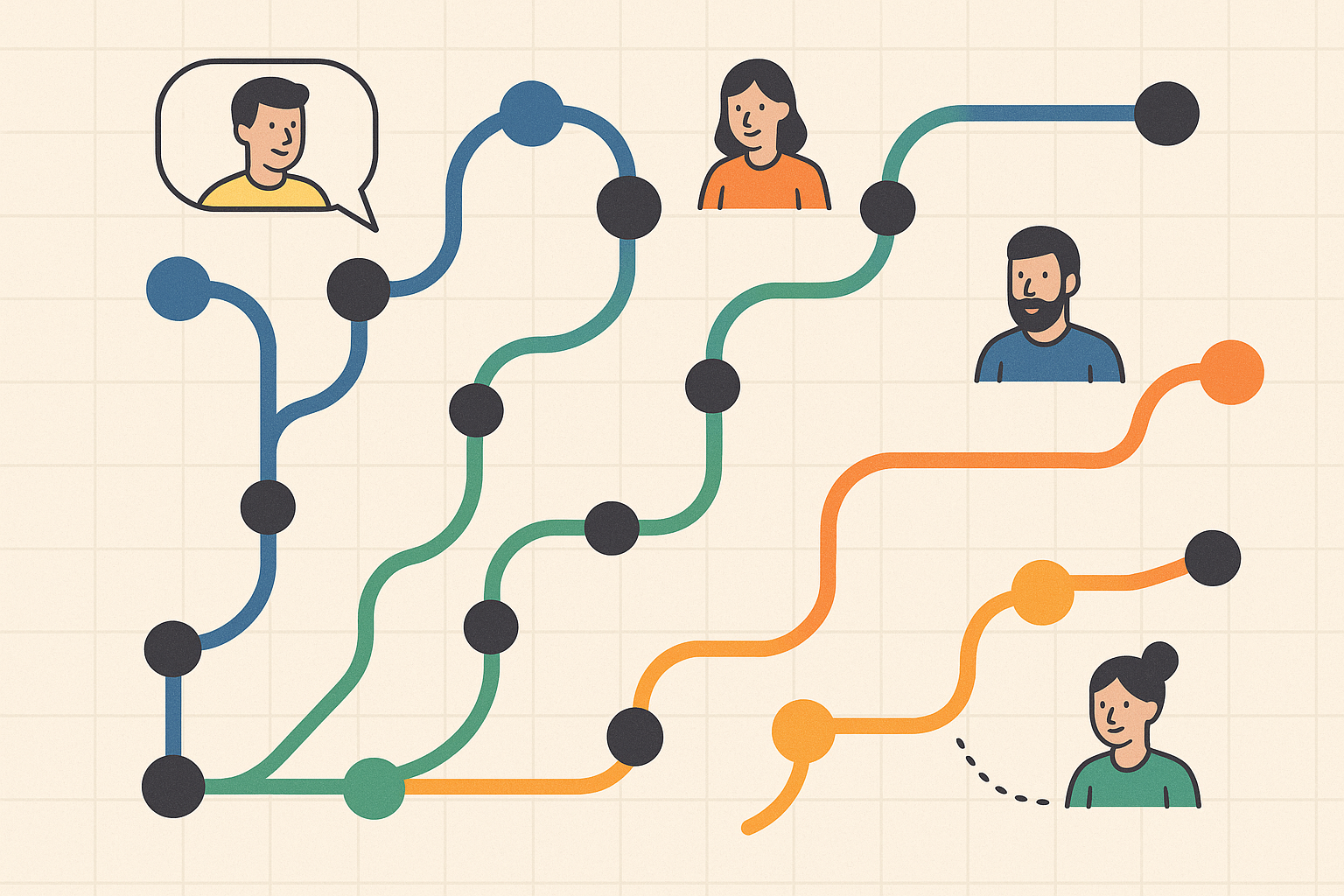Version Control System

1. What is a VCS (Version Control System)?
On any IT project, several developers work on the same codebase. Common problems arise: who made what changes and when? How to roll back the code? How to store multiple versions of a file? All of these issues are solved by a Version Control System — VCS.
A version control system is a tool that allows you to:
- track all changes to code and project files,
- collaborate in a team without conflicts,
- revert to previous versions,
- create experimental branches without affecting the main codebase.
2. Types of Version Control Systems
There are two main types of version control systems:
- Centralized — CVCS (Centralized Version Control System)
- Distributed — DVCS (Distributed Version Control System)
Centralized VCS (CVCS)
This is the older approach, used as early as the 1970s. Such systems have a single central repository that all developers connect to. Changes are submitted directly to this repository.
Advantages:
- Easy to use
- Single source of truth — central server
Disadvantages:
- Requires constant network access
- Limited flexibility in team workflows
Examples: SVN, Perforce, MS TFS, ClearCase
Distributed VCS (DVCS)
Each developer has a full copy of the repository on their local machine. Repositories can be synced directly or via a central server.
Advantages of DVCS:
- Offline work is possible — entire project history is available locally
- Fast operations and local commits
- Flexible branching and merging
Examples: Git, Mercurial, Bazaar
3. Comparison: CVCS vs DVCS
- DVCS offers the same features as CVCS, but with more flexibility.
- DVCS makes merging branches easier and supports parallel work better.
- DVCS works offline — the entire commit history is stored locally.
- More flexible collaboration model.
- CVCS is easier for beginners — lower learning curve.
- DVCS requires understanding more advanced concepts (branching, rebase, pull/push, etc.).
- Market leaders: CVCS — SVN, DVCS — Git.
4. How Version Control Systems Work — Basic Workflow
No matter which VCS type you use, the general workflow is similar:
- Get the code: clone or update your local copy from the repository.
- Make changes: implement features or fix bugs.
- Merge changes: if needed, merge with the latest version in the repo.
- Commit and push: commit your changes and push them to the shared repository.
Conclusion
Version Control Systems are essential tools for every developer. Understanding the difference between CVCS and DVCS, and knowing the basic Git commands, will greatly simplify your coding workflow and improve team collaboration.
Please log in or register to have a possibility to add comment.